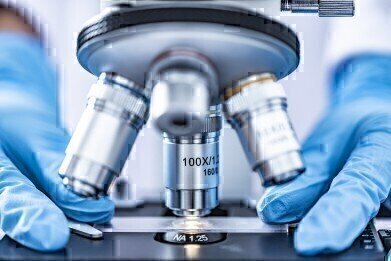Waste Management
Microplastics vs Nanoplastics: What's the Difference?
Feb 28 2022
The problem of plastic pollution is one which commands ever more media attention in today’s world. And well it should: it’s estimated that some eight million pieces of plastic enter our seas and oceans every single day. While plastic bottles, straws and other large items might immediately spring to mind when we think of plastic pollution, the vast majority is comprised of tiny particles of plastic.
Depending on their size, these are variously known as either microplastics or nanoplastics. Although the two terms are sometimes used interchangeably, they actually refer to very distinct classifications of plastic pollution, each with their own characteristics and potential consequences. Here’s a quick breakdown of the differences between them below.
Size
First and foremost, the size of a plastic particle is what defines its nomenclature. The term microplastics refers to pieces of plastic which are smaller than 0.5mm in diameter, which is roughly equivalent to a grain of rice. Meanwhile, nanoplastics are far smaller, at just 100 nanometres or less. To better understand what that means in tangible terms, it may be helpful to know that a single nanometre is 0.000001 millimetres, and that a strand of human hair is generally around 2.5 nanometres in diameter. That means that a nanoplastic is a maximum of 40 times the diameter of a human hair.
Toxicity
As well as differing in size, scientific research thus far points to the likelihood that nanoplastics are far more toxicologically active than microplastics. This is, primarily, due to their smaller size and more penetrative physical characteristics. For example, there is already evidence that humans suffer from airborne exposure to microplastics, which can be inhaled into our lungs and even infiltrate our bloodstreams. However, because nanoplastics are so much tinier, they can easily be absorbed into the body and penetrate biological barriers, potentially disrupting and damaging all types of internal organs and processes.
Research
One thing which the two classifications of plastic pollution currently share in common is the dearth of research surrounding them. While the latest techniques in microplastic research are furthering our knowledge of these ubiquitous contaminants, very little is yet known about exactly how they affect the human body in either the short or long term. On the other hand, there is even less information about nanoplastics. Their diminutive dimensions means that existing tools and techniques are not sufficient to provide much insight into their properties, though the scientific community is working on remedying that problem in the future.
Awareness
Last but not least, the two terms currently share different levels of notoriety in the mainstream consciousness. While everyone is aware of plastic pollution and its ill-effects, far fewer people are familiar with the term microplastics or what it actually means. There’s even less awareness about nanoplastics and where they are found, with some controversy revolving around engineered nanotechnology even among scientific circles. As such, more research is required into nanoplastic pollution and what can be done to tackle it.
Events
WEATHER • CLIMATE • WATER / EARTH OBSERVATIONS / GREEN ECONOMY
Oct 29 2024 St. Petersburg, Russia
Oct 30 2024 Hong Kong
Nov 05 2024 Toronto, Canada
Nov 06 2024 Ho Chi Minh City, Vietnam
Nov 12 2024 Valencia, Spain













